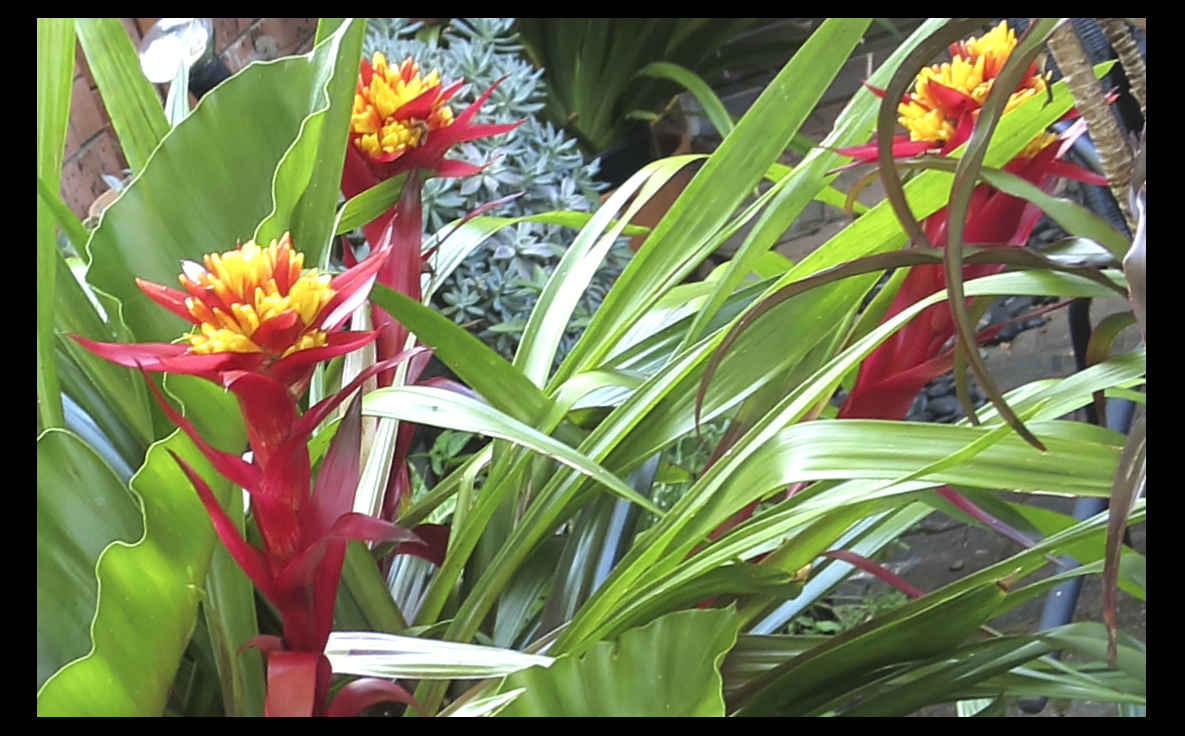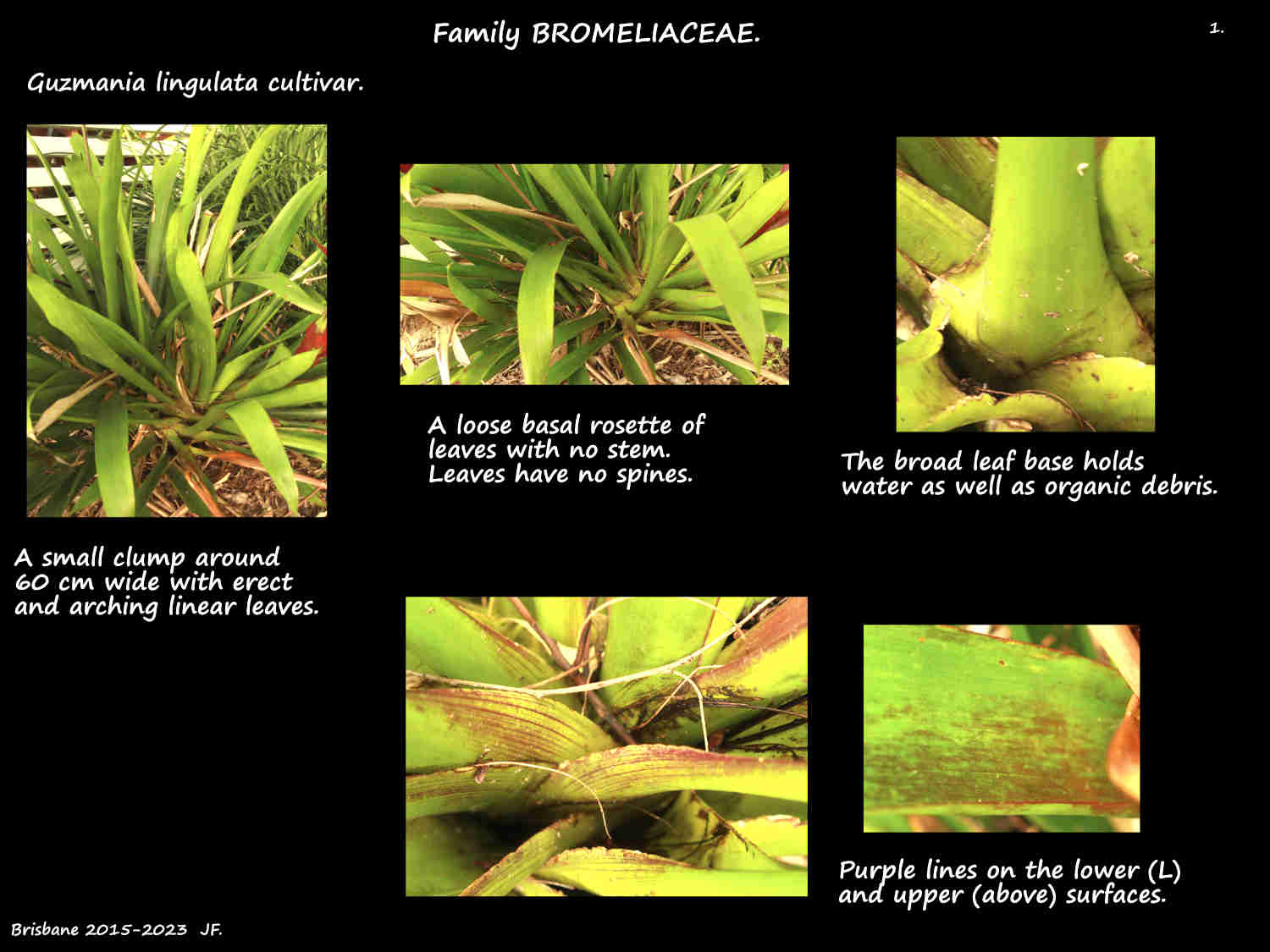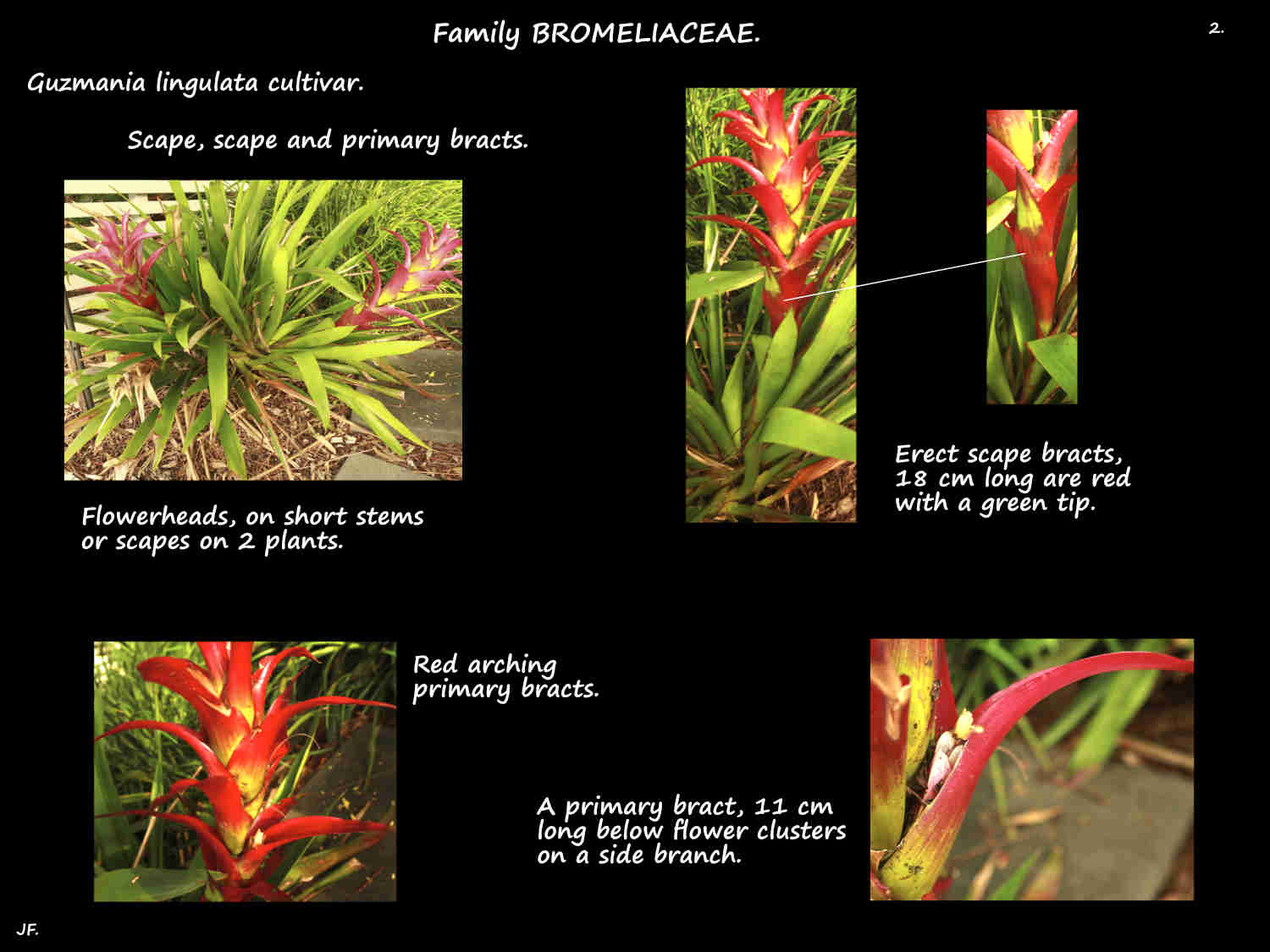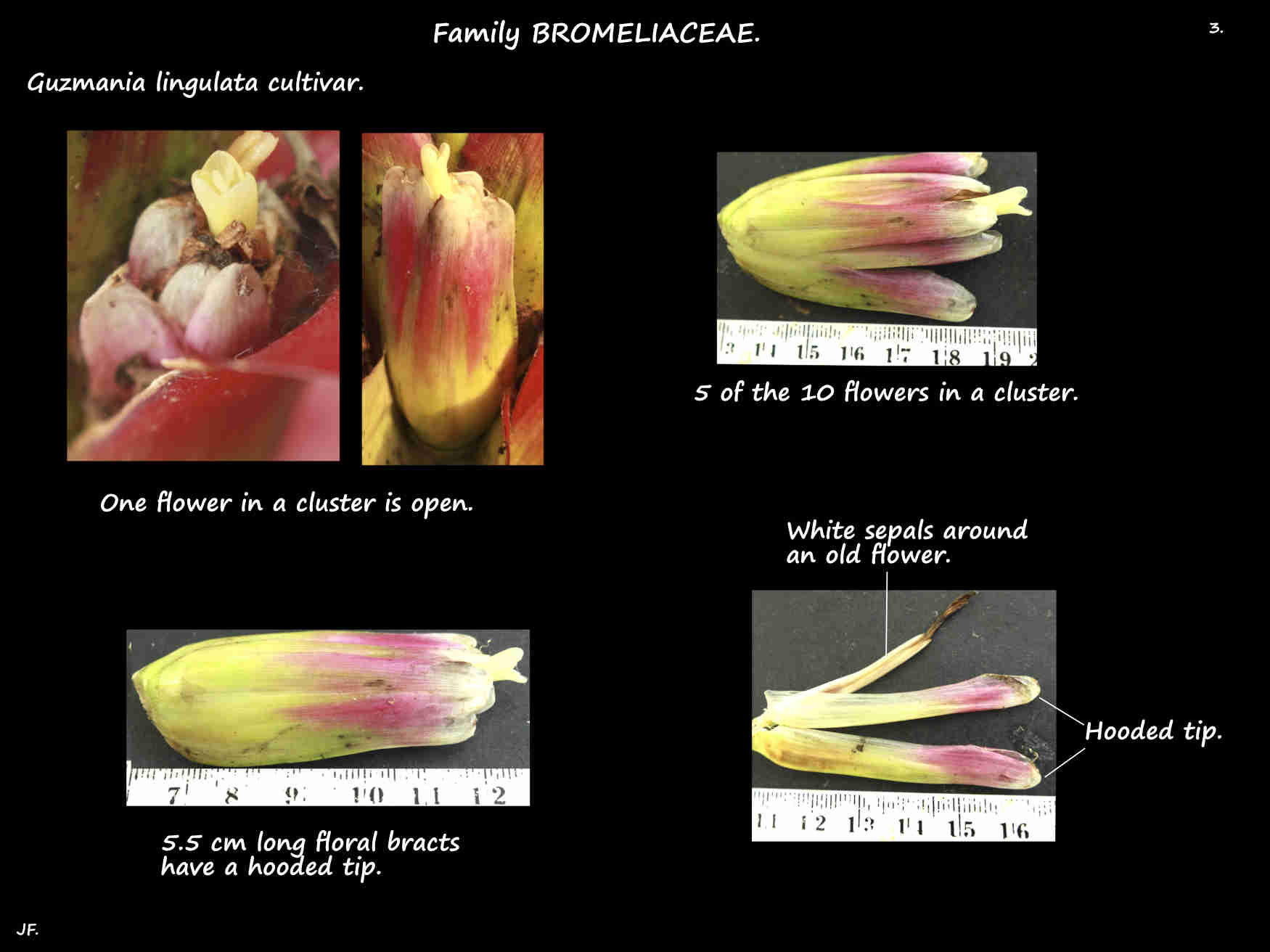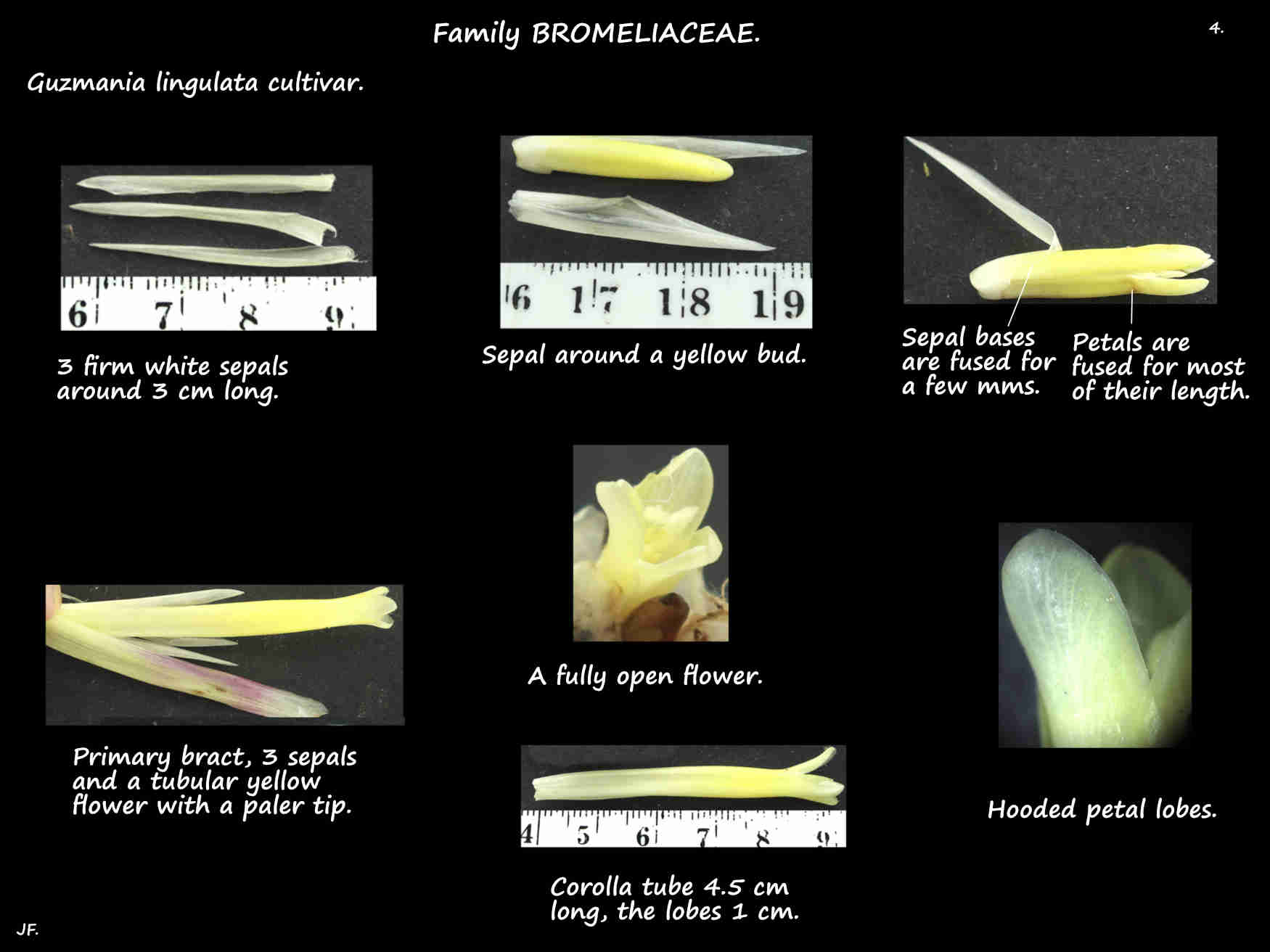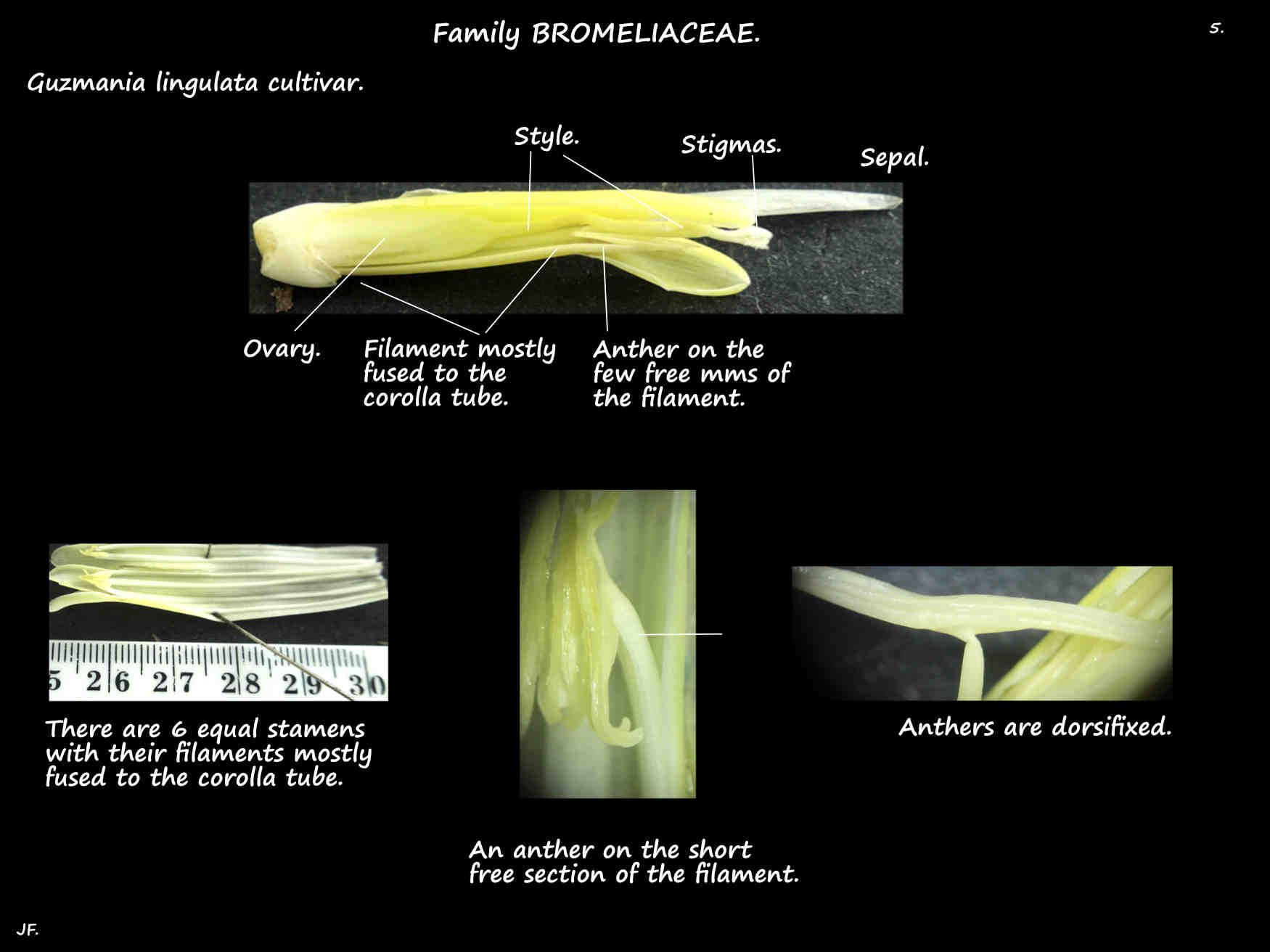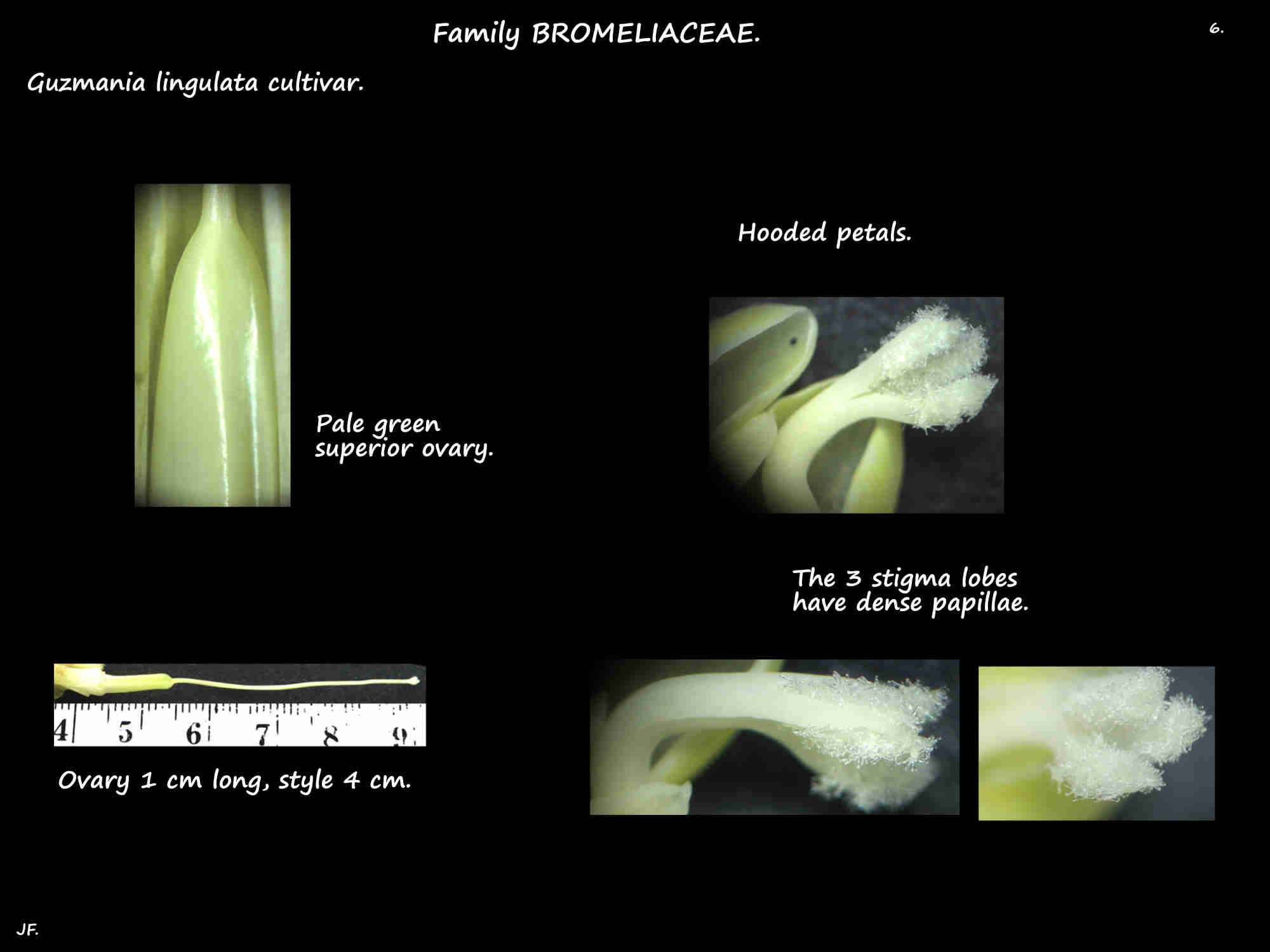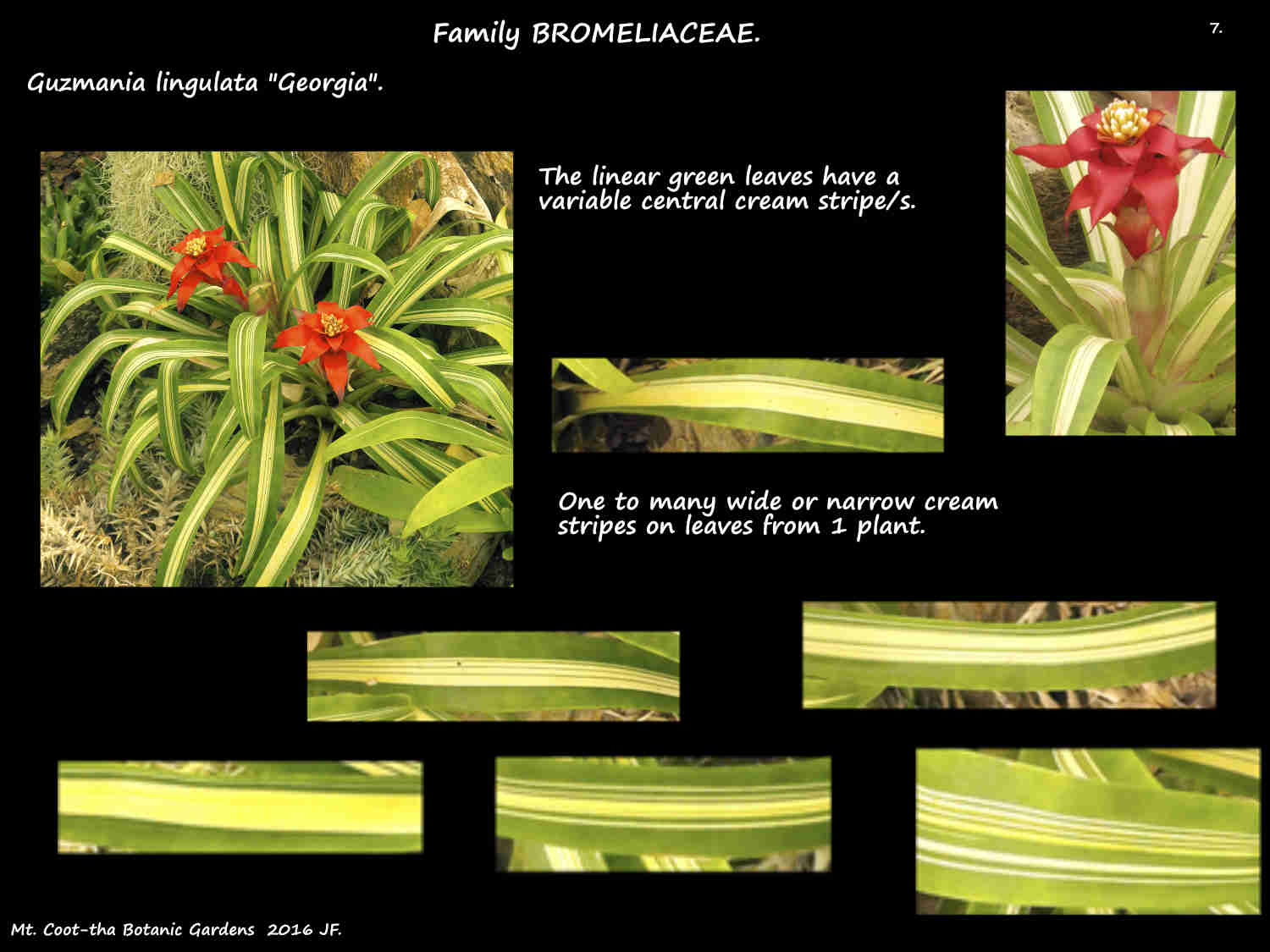Guzmania lingulata.
The Scarlet Star is an epiphytic bromeliad whose cultivars are common garden plants.
From 15 to 30 strap-like leaves form a loose basal rosette up to 50 or 60 cm high and wide.
The small roots are for support only as water and nutrients collect in the wide leaf sheaths.
Pups or offsets lead to the formation of small clumps.
The shiny mid-green leaves are up to around 35 or 40 cm long and 4 cm wide.
They have a pointed tip, no spines and there may be a few small scattered scales.
There may be longitudinal purplish lines on the lower surface or transverse bands.
When the plant is about to flower the central leaves turn red or orange.
The scape usually holds the inflorescence just below the upper leaves but sometimes above.
The thick scape, up to 20 cm long is usually hidden by the scape bracts.
The erect overlapping linear to lanceolate scape bracts have a pointed tip.
The larger and spreading upper ones form an involucre or whorl under the inflorescence.
They can be red, pink or orange and may have a few tiny scales at the base.
The inflorescence has very short side branches distributed around the central axis.
Each side branch (spike or raceme) has a primary bract at the base.
Similar to, but shorter than the scape bracts they often hide much or all of the flowers.
Each spike, a few cms long holds a tight ovoid cluster of a few to many flowers.
Each flower, on a very short stalk or pedicel has a floral bract protecting its outer surface.
The linear or ovate floral bracts, up to 6 cm long have a hooded tip.
They are a mix or red or pink with yellow.
The 3 narrow white sepals, 2 to 3 cm long are fused for a few mms at the base and the tips are hooded.
The 3 linear petals, up to 6 cm long are fused for most of their length and the short hooded lobes never fully open.
The petals are yellow with white tips.
The filaments of the 6 stamens are mostly fused to the corolla tube.
The short free sections hold the dorsifixed anthers that do not extend past the petals.
The superior ovary, around 6 mm long has a long white style with 3 white stigma lobes.
The fruit are 3-ribbed septicidal capsules around 3 cm long with a short beak.
Each of the 3 chambers holds numerous seeds with a pale reddish-brown tuft of hairs (coma).
Most Guzmania cultivars involve G. lingulata as a parent.
They have larger and brighter scape bracts that can be red, yellow, orange, purple or mauve.
There are a few with variegated leaves having white or red stripes and some small plants.
J.F.
